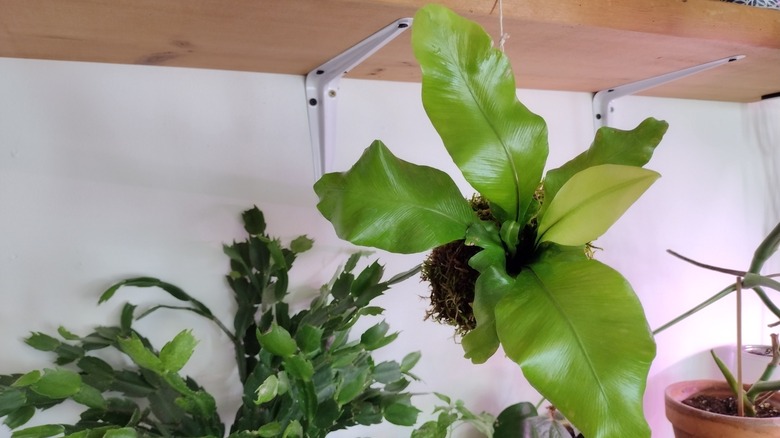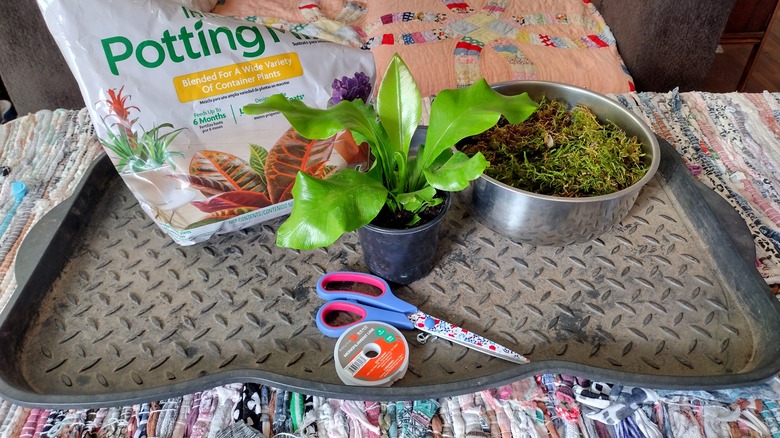We Made A Kokedama Moss Ball Planter & It's The Purr-Fect Alternative For Pet Owners
We have conflicting passions in life. The first consists of our beloved cats and dogs, and the second is our collection of plants. These two great loves are not exactly compatible. We often see photos of beautiful homes filled with plants and cats and cannot comprehend how this works. Sure, we've tried training our cats, but asking two freewheeling felines to do what we ask is as effective as trying to nail jello to the wall -– it's not going to happen. To maintain happy, safe pets, we grow only non-toxic houseplants on shelves where even curious cats cannot reach them. The problem is that we quickly run out of shelf space, but the list of plants we want to grow isn't getting any shorter. This is how we learned about kokedama, a method of growing plants with roots wrapped in moss, which can be hung from the ceiling or any other spot inaccessible to naughty kitties.
Kokedama originated as a form of bonsai in Japan. "Koke" means moss and "dama" means ball, and that's what we are attempting to make. This form of growing plants without a planter can be used to add natural elements to platters, glass containers, or, in our case, hanging living art.
Gathering materials
Before embarking on this project, we did quite a bit of research to find out what supplies we needed and came up with several different answers. Some sources included expensive options we couldn't get locally, like specialty bonsai soil. We opted for the simplest process, using items we could easily find locally.
We bought a beautiful bird's nest fern at our local plant nursery. We also needed potting soil, sheet moss, and fishing line for the ball. We had everything but the fishing line, which was only about $2, so using what we had on hand, this project cost us less than $10. To make it easy to remove our plant from the hanger when it's time to water, we used a nut and mini-carabiner from our junk drawer. We grabbed a bowl of water and a towel to be able to rinse and dry our hands and keep the mess to a minimum.
The sheet moss, which was leftover from our mounted staghorn project, was only about $2 a package in the art department at Walmart. If you already have a plant you want to mount, you could complete this project for a few bucks. You can also use dental floss instead of fishing line. By just using simple supplies, this project is exceptionally economical.
Making our kokedama
Although it didn't seem impossible, it did seem like wrapping our plant's roots in moss might require more than two hands to keep everything in place. We really expected it to be a frustrating experience to try to thoroughly surround the soil. The first step was soaking our plant so the soil was wet enough to form a ball that would clump together. We thought we would need extra soil to ensure the roots were covered, but we didn't need it. If the plant roots had been compacted or bound up, we would have loosened them and added more wet soil. We also soaked our sheet moss to make it more pliable.
With our root ball secure, we squeezed the extra water out of our sheet moss like a sponge. We laid it out and started wrapping the soil. The moist soil and moss helped it stick together while we wrapped the ball with fishing line. We tied the line to our bolt and then we wrapped the root ball over and under and all around in no particular order. Anywhere there was moss that threatened to fall off, we went over it with fishing line until the moss was firmly attached. We cut the line and tied the end to the bolt. After trimming some loose ends from the moss, our kokedama was complete. The whole project took about 20 minutes.
Results
If we had to use one word to describe the process of making a kokedama, it would be "cathartic." The benefits of gardening and houseplants are well documented, but somehow this process was even more relaxing than typical houseplant maintenance and planting. Perhaps it is the practice of working with plants combined with the creativity of the bonsai nature of this method of growing that makes it feel even more beneficial for our mental health. And, of course, when the project is finished, we have a beautiful piece of living art. We cannot wait to make more –- as soon as we can figure out where to put them!
We didn't run into any significant challenges with this project. The materials were cheap and easy to find, it didn't take long, and it was truly enjoyable to make. We hope keeping our beautiful bird's nest kokedama alive is as easy as it was to create. Watering this type of planting is different than potted plants. We will check it frequently until we understand how quickly it dries out. When the soil appears dry, we will unhook it and soak it in water. Then, we will let it drain before hanging it back up. Between dunks, we will give it a little spritz to keep our fern happy.



